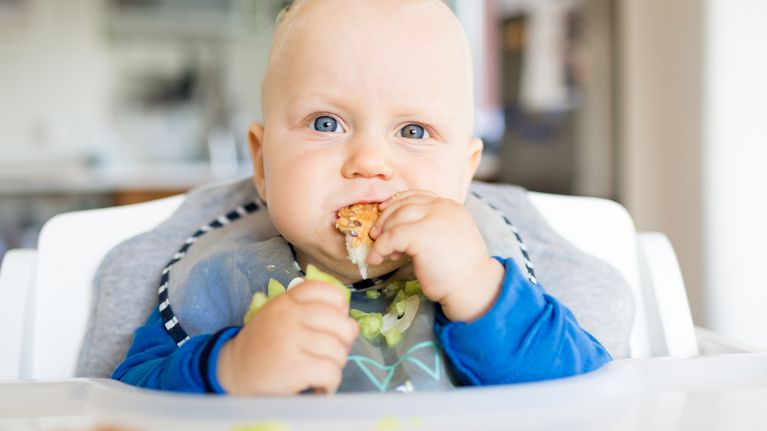Is baby-led feeding different from baby-led weaning?

Photo: iStockphoto
“Baby-led weaning” was coined by authors Tracey Murkett and Gill Rapley in 2008 when they published their initial book in the UK. It refers to a baby starting solids solely by self-feeding with food they can grasp, without any purées or spoon-feeding. In the UK, where “weaning” refers to the introduction of complementary foods, this term makes a lot of sense, but here in North America, most parents hear “weaning” and think it means stopping breastfeeding. That’s why North American baby reference books tend to refer to it as “baby-led feeding” or “self-feeding” to avoid confusion. (You’ll probably still see the “BLW” acronym in Facebook groups, however.) Starting solids doesn’t mean you’re going to stop or phase out nursing or discontinue bottles.
Some people feel baby-led feeding is a less hard core approach than baby-led weaning. It’s sometimes referred to as “modified baby-led weaning,” in which some smoother textures and purées are combined with larger pieces a baby can pick up on their own. More diehard advocates of baby-led weaning focus on exclusive self-feeding and no smooth textures whatsoever.
Our current Health Canada guidelines actually recommend a combination approach. “It’s important that parents and caregivers provide a variety of soft textures and finger foods from six months of age,” says Becky Blair, the Dietitians of Canada spokesperson and an expert on infant feeding. “You could call this a partial BLW approach,” she adds. Aim to expose your baby to lots of different textures: lumpy, tender-cooked, finely minced, puréed, mashed or ground.
Parents are often concerned about the safety of a partial BLW approach, but this modified method allows for nutritional needs to be met, while still letting the baby self-feed with a low risk of choking. With a first child, parents are often a little scared of self-feeding, but by the time they have a second or third kid, they’re ready to start solids with whatever food is already on the dinner table—and a combination approach happens out of convenience.
If you’re starting with completely liquified purées, transition gradually to a thicker consistency before surprising your baby suddenly with solid foods. This helps them learn to munch, chew and gag up the soft but solid textures before moving on to harder options. Beginning with a thicker mashed texture instead of a totally smooth, soupy purée typically means the transition time to more solid foods will be shorter. Starting with pieces that are soft and easy for your baby to pick up and self-feed is also a great way to go.
Weekly Newsletter
Keep up with your baby's development, get the latest parenting content and receive special offers from our partners